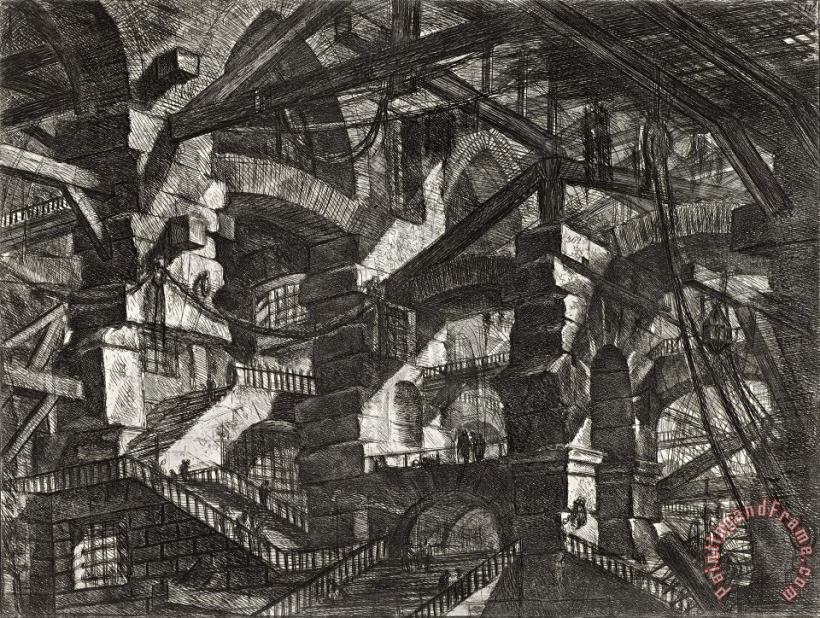
Eco’s fabulous medieval library maze and Hogwarts’ stairwell are vintage Piranesi. It becomes even more explicit in the film adaptations. The influence is also discernible in Umberto Eco’s The Name of the Rose and the Harry Potter books.
Giovanni piranesi series#
An etching from the Carceri series hung in his office and the scenes in heaven in The Discovery of Heaven (and in its film adaptation) are clearly inspired by it. Harry Mulisch (one of the great Dutch novelists) was also a fan. Huxley’s Brave New World (1932) and George Orwell’s 1984 (1948) are dystopian novels in which the menacing world of Piranesi is recognisable. Arquitecto, grabador, arqueólogo y teórico italiano. A tyranny of order and efficiency that reduces humanity to a predictable cog in a process. He compares Piranesi’s prisons to the panopticism that was so popular in architecture at the time. Aldous Huxley wrote an essay accompanying an edition of Piranesi’s prints in 1949. That started early on with writers and poets such as Johann Wolfgang von Goethe, Samuel Taylor Coleridge, Thomas de Quincey, Lord Byron, John Keats, Honoré de Balzac, Victor Hugo and Edgar Allan Poe. Like Escher, Piranesi was an artist who infuses his prints with both order and chaos, thus garnering mass appeal. £1600 Antichita Romana Tom II P XL Piranesi Giovanni Battista £ 350.00 PIRANESI, Giovanni Battista. University of Iowa Museum of Art, Iowa City. Giovanni Battista Piranesi Antichita di Cora Veduta del presente stato dell interno del Pronao del Tempio del Ercole nella citta di Cora Published Rome 1764 Etching 390 x 540 mm A fine early lifetime impression on uncut sheet. Tver Art Gallery, Tver, Russia (in Russian) The 3rd and 4th thumbnails on the page are prints by Piranesi. Giovanni Battista Piranesi at the The British Museum, London, UK. For many artists it is an abiding source of inspiration, particularly in terms of its utopian and dystopian character. Works from the museums drawings and engravings collection.

Piranesi’s oeuvre not only influenced M.C. Conversely, Escher’s prints lack the dark, menacing element that characterises Piranesi’s series. In 1761, having become the leading vedutista in Rome with a growing clientele of foreign patrons, Piranesi set up his own printmaking business and showrooms in the Palazzo Tomati on Via Sistina. But in terms of abandoning gravity and creating truly impossible buildings and spaces, he never goes to the extreme to which Escher would eventually go. Piranesi exaggerates the perspective and renders his spaces hugely impressive with dramatic lighting and a beautiful light/dark contrast.
.jpg)
Giovanni piranesi full#
Here he creates a threatening, hidden world full of ominous caverns and hanging pulleys and cables, in which man is occasionally present yet markedly insignificant and vulnerable. Labyrinths filled with an infinite number of stairs, ladders, bridges, gates and galleries, none of which seem to lead anywhere. The Carceri is a series of etchings with colossal, vertiginous spaces that seem to never end. Giovanni Battista Piranesi, Carceri d'invenzione (plate 7, The Drawbridge), second version, etching, 1761 Giovanni Battista Piranesi, Carceri d'invenzione (title plate), second version, etching, 1761


 0 kommentar(er)
0 kommentar(er)
